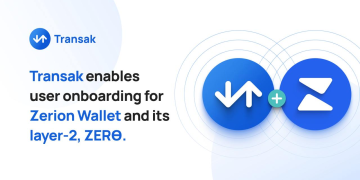The blockchain world is one of the most prolific financial revolutions of this day, with Bitcoin remaining the world’s most valuable blockchain. Other blockchain technologies like Ethereum and Cardano provide relevant services, including smart contract options.
Generally, ETH and ADA are among the most popular cryptocurrencies whose value is continually increasing. Recent statistics by Coinmarketcap show that Ethereum’s market cap is about $400 billion, while Cardano’s stands at $50 billion. Therefore, Ethereum is already a popular cryptocurrency platform, and Cardano is not far behind.
One thing that makes the comparison of Cardano and Ethereum necessary is the similarities between the services they provide. For instance, the duo uses smart contract technologies to provide the option for decentralized applications.
Since the introduction of Ethereum 2.0, both blockchain protocols(Cardano and Ethereum) have been using similar consensus mechanisms (Proof of stake). The impact of the ETH 2.0 introduction is not yet vastly seen in the cryptocurrency market.
The idea behind the introduction of Ethereum 2.0 was to end the issues of network congestion. Cardano, since launch, has leveraged the Proof of Stake method and, as such, was ahead of ETH. The POS consensus mechanism and smart contract options are the major similarities of the two platforms. What distinguishes the two blockchain platforms?
This guide will discuss the technological difference between Ethereum and the Cardano network. It’s essential to consider the power of each blockchain project, including features like speed, scalability, and costs.
Cardano and Ethereum: Difference in Speed
Ethereum
Ethereum platform can process 20 transactions every second, actually faster than the crypto giant bitcoin. Moreover, according to various analysts, this platform can complete the whole transaction process in a short period of 5 minutes.
Generally, the speed of transaction depends on the amount of gas you give out. For instance, if you pay slightly lower gas fees, your transaction could take days to complete.
Cardano
Cardano contrarily is capable of processing over 1 thousand transactions every second, proving faster than Ethereum. There is an opening that shows that the network could in the future support 1 million TPS. This platform, which is continuously updating its network, is working towards providing the best services.
However, the transactions in Cardano take an average of 5-10 minutes to fully complete. Primarily, it takes about 20 seconds to complete one block. However, to ensure there is no reversibility, Cardano instills a process that involves putting around 15-30 blocks.
Ethereum vs. Cardano Costs
Ethereum
Ethereum costs are increasingly becoming unmanageable, according to various sources. According to recent Coindesk statistics, Ethereum costs are currently at an average of $12.95, an increase of over 6.35k% from last year’s costs.
The formula used in determining the total costs for ether transactions involves multiplying the gas amount and the price per gas. The maximum transaction fee is the maximum gas limit by the gas price.
Cardano
Unlike Ethereum, Cardano has very fair prices, and the costs of transactions are pretty affordable. The costs involved in a transaction depend on the size of individual transactions.
The formulae used in calculating the price are X+Y*Size, where X and y are constant values of 0.155318 and 0.000043946. However, the average costs are generally more friendly than Ethereum.
Ethereum Vs. Cardano Scalability
Ethereum
Scalability is a huge problem in the Ethereum network, with the platform facing tons of difficulties. In late 2018, the Ethereum network hit over 1 Terabyte, and the size is growing at a super-fast rate.
Ethereum is a host of hundreds of small projects in ERC-20, ERC-721, and ERC-1155, for Defi and NFTs. Although the platform developers want to strengthen the system using techniques like sharding, scalability is still a big issue.
Cardano
Almost every blockchain network was designed to beat the scalability of an extensive network like Visa. However, most networks currently, including the monsters like Bitcoin and Ethereum, are not scalable. For instance, the platforms only process a few transactions every second.
However, Cardano is capable of transacting at a super-fast rate and hosts many transactions simultaneously. Therefore, investors with all values can transact in Cardano and enjoy the platform’s capabilities. Compared to Ethereum, Cardano provides more scalable transactions, larger than many blockchain protocols in the cryptocurrency space.
Ethereum Vs. Cardano Security Protocols
Ethereum
The Ethereum network although claims to be highly secured, there are several risks that Ethereum smart contracts face. There are issues like reentrancy attacks, gas limit vulnerabilities, simple logic bugs, and many more.
Moreover, in past research, crypto analysts discovered that ETH is likely to fall into brute force attacks that are eating blockchains today. However, with the recently introduced ETH 2.0, it’s safe to say that the network is also working to eliminate the chances of hacks.
The Ethereum public blockchain is strong; therefore cannot have any threats of being banned in its entirety. The network itself is robust; therefore, the issue of security is not a huge problem.
Cardano
To ensure the platform has top security, Cardano adheres to regulations that help protect the platforms. Generally, the Cardano blockchain platform is decentralized, but the adherence to regulations makes this platform highly trustworthy.
This blockchain protocol has been leveraging POS systems, thus hedging against the possibility of 51% attacks. In 2019, some Cardano currency was stolen in a Bitrue exchange attack, and the Bitrue exchange shifted blame to Cardano’s vulnerabilities. However, since the claims went unproven, it’s safe to say that Cardano is a highly dependable network.
Cardano and Ethereum Blockchain Architectures
Ethereum
The Ethereum network introduced its programming language dubbed Solidity. The solidity language helped vastly in the creation of the ethereum virtual machine. Ethereum is still a single-layer network; thus, there’s little prowess in the network’s scalability.
Cardano
Contrarily, Cardano developers leveraged a programming language dubbed Haskell and Plutus. Cardano has a dual-layer system, CSL, and CCL, both handling services separately. This second layer helps bolster scalability, speed, costs, and reliability.
As an Investment Asset
However, when looking into the short-term investment option, Ethereum’s coin ETH shines in that area. Already the token is showing the most excellent prospects it has ever shown.
For instance, as of the time of writing, one ETH was trading at around $3,481, and the numbers were increasing. Experts say that soon, the coin will hit the $5k mark; therefore, this coin is a huge investment deal.
Cardano’s ADA is, however, lagging in terms of prices, with an ADA trading at $1.64. Although it’s expected that the currency will grow further soon, it won’t beat Ethereum. Investors can still use the ADA currency since it’s still among the best in the crypto market.
Cardano vs Ethereum: Verdict
After a thorough look into Ethereum and Cardano’s technology, it’s pretty clear that Cardano’s is miles ahead of Ethereum’s. What’s more, Cardano’s developing team is still working to create even more solutions for the entire Cardano network. Therefore, soon Cardano will be a more reliable smart contract option than Ethereum.
Cardano will also continue providing cheaper, safer, more scalable services, and probably in the long run, ultimately thrive over Ethereum.
However, when you look into the ETH and ADA prices, it’s clear that ETH is a better investment alternative. Since experts are already foreseeing more incredible things for ETH, this currency remains a better choice for investment.






















